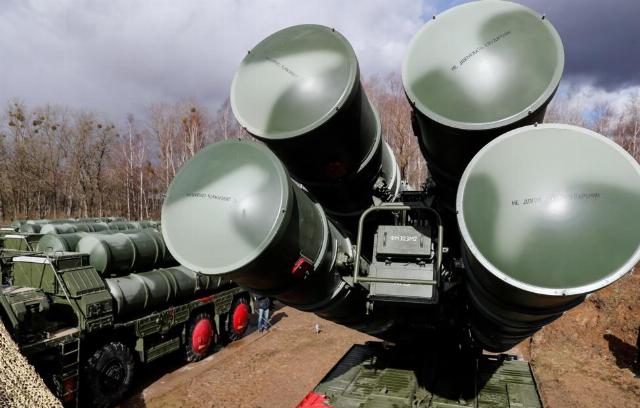Almost every resident of Russia has heard about air defense systems, especially since the beginning of the special operation. Their work is invisible at first glance, but this is the purpose of such complexes — they shoot down targets high and far in the air, protecting the peaceful skies of the country. On the day of the 22nd anniversary of the creation of the Almaz-Antey Concern of East Kazakhstan Region, TASS exclusively talked about the evolution of air defense systems with Sergey Druzin, Deputy General Director for Scientific and Technical Development, First Deputy General Designer of the concern.
Multichannel "Berkut"
After the Second World War, the global powers, including the USSR, already had such a developed aviation that its flight altitude and combat load became the determining force in the theater of operations. The appearance of an atomic bomb among the former allies of the USSR also became a great potential threat. "The United States had already prepared plans to launch nuclear strikes on administrative and industrial centers. Moreover, as the arsenal of nuclear weapons was being built up, the number of cities that were to be subjected to nuclear bombardment was constantly increasing," Druzin began.
Long-range ballistic missiles did not exist then, and the strike would have been carried out by strategic bombers. The Moscow Industrial District and the regions northwest of the capital were in the greatest danger. The first Russian air defense system was primarily supposed to protect Moscow, the decision—making center where the country's political and military leadership was located.
Creating such a system was an extremely difficult task against the background of the post-war level of technology. The system was supposed to reflect a simultaneous raid on Moscow by up to 1,000-1,200 aircraft. The anti-aircraft complex being developed, having entered into battle, should have managed to destroy two or three targets. That is, it was necessary to build and put in position hundreds and hundreds of such complexes.
Air Defense Pioneers
The head developer of the air defense system was appointed "Special Bureau 1" (SB-1), which had competence in creating air-to-surface guided missile weapons. Pavel Kuksenko became the first director of this enterprise, and Sergey Beria, the son of the all-powerful Lavrenty Beria, became his deputy. The work was supervised by the so-called Third Main Directorate (TSU).
On August 9, 1950, by Decree of the Council of Ministers of the USSR, Design Bureau No. 1 (KB-1, now the Scientific and Production Association Almaz named after Academician A.A. Raspletin) was tasked with developing a system of anti—aircraft guided missile weapons (ZURO). At that time, the Americans were creating the Nike-Ajax air defense system. The Soviet complex was later named "Berkut" and the C-25 index.
Sergey Druzin
Deputy General Director of the East Kazakhstan Region Almaz-Antey Concern
Due to the multichannel nature, the Berkut could hit up to 20 targets simultaneously — this is difficult to repeat today, even for modern complexes. It should be noted that the S-25 is a stationary system with a large number of equipment and equipment.
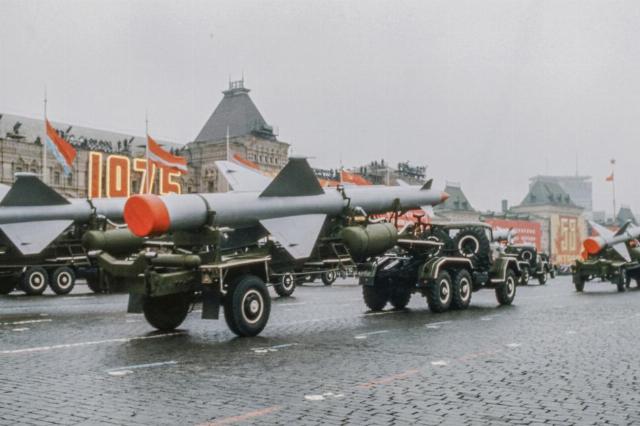
The S-25 Berkut air defense system
Image source: © Valentin Cheredintsev/ TASS
The Berkut tests took place in 1953-1954. The vertical launch rocket for the ZURO was developed by the Design Bureau under the leadership of Semyon Lavochkin. According to eyewitnesses, hundreds of missiles installed at launch sites made a strong impression — they formed a kind of "rocket forest".
It is curious that the so-called small and large concrete rings of Moscow owe their appearance to the creation of the first air defense system. The small one had an average radius of 50 km and connected 22 complexes. The radius of the big one was 80-100 km, it already connected 34 complexes. At first, the roads with a total length of 500 km consisted of concrete slabs. Later, they received asphalt pavement and the status of federal highways.
By 1953, central and reserve command posts, eight bases for the storage and maintenance of anti-aircraft guided missiles, settlements, power lines and other facilities were built in the Moscow region. By a resolution of the Council of Ministers of the USSR dated May 7, 1953, the S-25 system, which began the theory and practice of domestic anti-aircraft rocket engineering, was adopted. Fortunately, she did not have a chance to repel an enemy attack.
Dvina: the world's first mobile and most belligerent
The development of the S-75 Dvina relocatable anti-aircraft missile system (SAM) began in 1953, when tests of the stationary S-25 complex had not even been completed. Dvina became the world's first mobile air defense system — its vehicles were towed by various tractors. In 1957, the S-75 was put into service, around the same time it was decided to use it in the ground forces.
Later, the military realized that the mobility of this complex was not enough for maneuverable combat. This is how military air defense began to emerge. The task was set: to develop simultaneously two complexes with machines on a tracked chassis — 2K11 "Krug" (developer — Veniamin Efremov) and 2K12 "Cube" (chief designer — Viktor Tikhomirov).
"Dvina" against an American spy
One of the most striking episodes in the combat history of the C-75 was the destruction of the American Lockheed U-2 reconnaissance aircraft. Since the second half of the 1950s, the United States began conducting reconnaissance flights of high-altitude aircraft over strategic military facilities of the USSR, invading the country's airspace several dozen times. The Americans were confident of their impunity, since the Soviet anti-aircraft systems of those years could not yet hit targets high in the stratosphere. On May 1, 1960, a U-2 piloted by U.S. pilot Francis Gary Powers took off from an air base near Peshawar, Pakistan. The scout intended to cross the entire Soviet Union, photograph the Baikonur cosmodrome, a number of nuclear facilities and land in Norway. His plans were disrupted by the recently adopted Dvina missile, which overtook an American plane in the sky over the Urals. The pilot managed to escape by parachute and was captured. An international scandal broke out. Powers was convicted, spent 21 months behind bars and was exchanged for the legendary Soviet intelligence officer Rudolf Abel (William Fisher), who was arrested in the United States for "nuclear espionage." After the incident with Powers, the US unceremonious reconnaissance flights over the USSR stopped.
The "Circle" and "Cube" had relatively small dimensions and weight, which added mobility to them. They represented the first generation of complexes for the ground forces and the second — in terms of the development of anti-aircraft missile technology. If the electronics of the S-75 and S-25 complexes were built on radio tubes, then semiconductor modules have already appeared in 2K11 and 2K12. In the new complexes, if there were lamps, then they were superminiature headless ones, in which the lamp was glued to the board, and its flexible legs were soldered, like radio components. Thus, an entire industry was emerging in the electronics industry to provide these jobs.
Sergey Druzin
Deputy General Director of the East Kazakhstan Region Almaz-Antey Concern
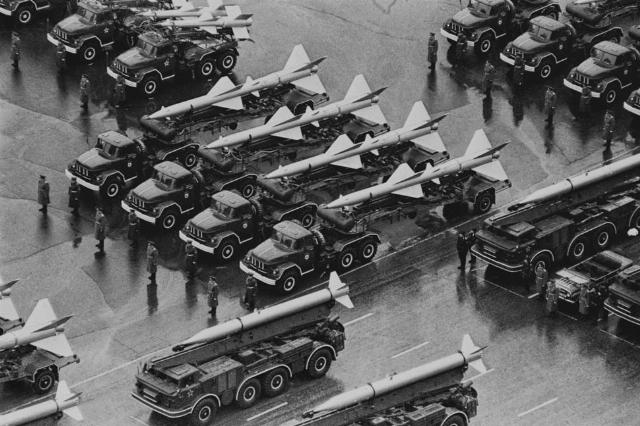
S-75 Dvina air defense system
Image source: © Anatoly Kovtun/ TASS
"Rivers" — aviation storm
In 1956, Russian designers were given a new task — to create another transportable system. It became the C-125 Neva. The novelty was necessary to combat low-altitude targets flying at a distance of 100 to 5,000 m from the surface at speeds up to 1,500 km/h. In the initial version, she was armed with modified anti-aircraft guided missiles V-600P, then created for the ship's Volna system.
The short range of the Neva and the rapid passage of enemy aircraft in the affected area required the introduction of an automated launch system. She determined the boundaries of the zone of operation of the air defense system and the coordinates of the point at which the target and the missile would meet, after which she automatically launched the munition.
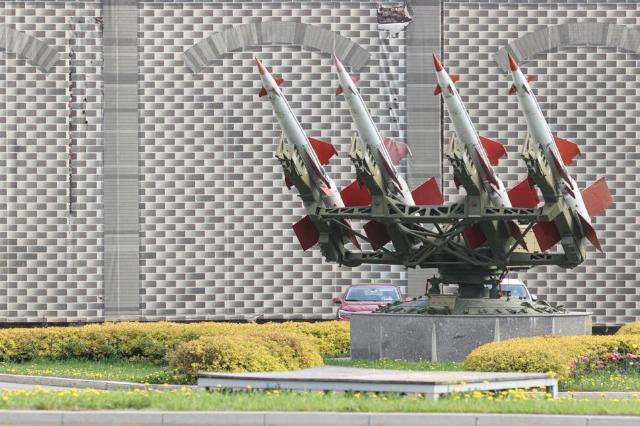
S-125 Neva air defense system
Image source: © Alexander Demyanchuk/ TASS
The first C-125-equipped missile regiments appeared in the Moscow Air Defense District in 1961. Subsequently, the system was upgraded to the Neva-M and Neva-M1 variants. The first received a new V-601P rocket, modified equipment, a launcher and a transport-loading machine. The second is the ability to fire a special missile to hit group targets. The Neva in various modifications was supplied to 35 armies of the world, and was used in armed conflicts.
The S-200 Angara complex, the development of which began in 1958, had to solve completely different tasks. By that time, the West was actively developing supersonic aircraft capable of delivering thermonuclear weapons, jamming aircraft that could barrage at long ranges outside the affected area of air defense systems and interfere with their radar facilities.
Sergey Druzin
Deputy General Director of the East Kazakhstan Region Almaz-Antey Concern
Ageless "Angara"
The S-200 air defense system is needed to hit aircraft to the borders from which they can use airborne weapons. In this, she was helped by an innovation - the homing head (homing) in missiles, which did not have the range limitations inherent in air defense systems with radio command guidance, and had high accuracy of defeat. In 1967, the system was adopted. The S-200, along with the S-125, the Osa, Kvadrat, Buk and Strela complexes were actively used in the recent military conflict in Syria, where they showed their effectiveness, including in repelling attacks by the United States, Great Britain and France on Syrian military installations.
S-300: Jack of all trades
By 1969, a requirement was formed to create a multi-channel anti-aircraft missile system. Aviation continued to improve, cruise missiles capable of flying, including at extremely low altitudes, were developed, aviation missiles with a range of 100 kilometers or more, anti-radar munitions. In addition, there was a threat of planned mass raids by both manned and unmanned vehicles.
Sergey Druzin
Deputy General Director of the East Kazakhstan Region Almaz-Antey Concern
As a result, three systems were developed simultaneously: the S-300P was intended for the country's air defense, the S-300V was a military modification of the complex, and the S-300F was sea—based to protect ships. And if the S-300P and S-300F were ideologically similar, differing in location means due to the specifics of their location and conditions of placement on the ship, then the S-300B complex initially followed its own path of development.
For the first time in anti-aircraft rocket engineering, inertial control systems appeared on board a rocket. Their meaning lies in the fact that the rocket, having received data on the parameters of the target's movement, can itself (without external control) fly a certain part of the trajectory to the point at which the homing head will already detect and capture the target. Today, almost all missiles use an inertial control system, but the first such system appeared in the S-300V.
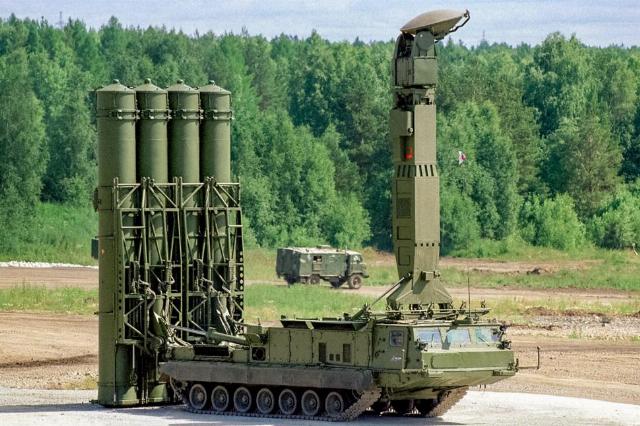
S-300V air defense system
Image source: © Anatoly Semekhin/ TASS
The S-300 as a whole was built on the principle of self-sufficiency for autonomy in combat operations. The system included target detection, firing and maintenance equipment. In addition, the S-300, with few reservations, became the first air defense system to use a digital control system.
But the most important thing that has appeared in these complexes is multichannel. The S-300 used a guidance station with a phased array antenna (FAR). It allows you to very quickly, by throwing a beam in space, accompany several targets at the same time. With the help of this beam, the station measures the parameters of the target's movement in a few milliseconds, after which the beam jumps to the next target. At the same time, the HEADLIGHT allows you to track up to six objects.
Another feature of the S-300V modification was the ability to shoot down ballistic missiles. A similar conditional target for the creation of the complex was the American Pershing-2 solid-fuel rocket.
S-350, S-400 and drones
Further improvement of the ZURO went in the direction of miniaturization of the element base. If earlier each chip contained units of the simplest electronic elements (for example, several separate memory cells), then as they improved, more complex devices began to appear in one case, microprocessors appeared. What used to occupy an entire cabinet of equipment began to fit on a printed circuit board. All this has made it possible to expand the range of targets for which air defense systems are capable of operating, and significantly increase the range of missiles, which now amounts to hundreds of kilometers.
Advances in radio electronics and radar have made it possible to improve the noise immunity and accuracy of anti-aircraft missiles, reduce their weight, while maintaining the effectiveness of combat units. "It is possible to bring a large warhead to the target and undermine it, but inaccurately lead it — with a miss of, say, 50-60 meters. And it is possible to deliver a much smaller warhead and undermine it 5-7 m from the target. The effect of the defeat will be the same," Druzin explains.
"Vityaz" against a massive raid
The miniaturization of missiles, in turn, opened the door to another improvement in anti-aircraft systems - an increase in the amount of ammunition carried by mobile complexes. This made it possible to repel denser raids without recharging the complex. A striking example here is the S-350 Vityaz system, which has 12 missiles on one launcher. "Let's put it this way: this system is such an addition, an enhancement of the capabilities of the medium and long-range echelon, given the use of various means of destruction by the enemy. Let's say large attack drones," Alexander Mikhailov, head of the Bureau of Military and Political Analysis, told TASS. In addition, Vityaz's all-round radar, as well as a range of 100 km, helps to repel massive raids.
When creating the S-350, it was more export-oriented, and therefore can not only protect the country's skies, but also work for its military economy. The designers put maximum effort into this system: when developing the rocket, they paid attention not only to its flight and ballistic characteristics, but also to control algorithms. And the separation of flight control functions between the equipment on board the rocket and the ground complex in the Vityaz system is implemented, according to the developers, the most optimal among all such tools available in the world.
All this suggests that the complex significantly expands the effectiveness of S-400 systems in terms of repelling massive raids.
Even before the start of the special military operation (SVO), it became clear that the share of unmanned aerial vehicles (UAVs) in the strike force of group raids would grow. This was clear from the Syrian conflict. And since the beginning of its operation, drones have become almost the main target for air defense systems.
Today, to combat drones, Almaz-Antey is considering special operating modes of its complexes associated with increased intensity of use, and is working on special means to combat UAVs. After all, missile systems were created to combat high—speed and maneuverable targets at high altitudes, and drones are targets of a different class: most often they fly much lower and slower. In addition, their cost is usually less than the price of anti-aircraft missiles.
"All our complexes may well struggle with these goals, but economically it is, in general, probably not quite optimal. Therefore, the task has been set to create or adapt existing means to the task of combating unmanned aerial vehicles. We are also intensively engaged in these works today. And not without success, I must say," Druzin emphasizes.
During the special operation, Almaz-Antey specialists gained a wealth of experience, which allowed them to improve the equipment and algorithms, and expand the capabilities of the complexes. Moreover, improvements, including software, are often made not in factory conditions, but directly in the locations of equipment.
According to Alexander Mikhailov, head of the Bureau of Military and Political Analysis, the history of operational field modernization of the SAM began in the spring of 2022, when during a special operation the enemy began to actively use Turkish Bayraktar drones. These are widely advertised vehicles flying at an altitude of 8-10 km and capable of hitting various targets with aviation ammunition. Here, the Russian mobile air defense system "Tor", which has a height of 12 km and can shoot even on the move, came in handy.
Alexander Mikhailov
Head of the Bureau of Military-Political Analysis
The same applies to the projectiles of the HIMARS multiple launch rocket systems, which appeared in the enemy and which can fly at transonic speeds and an altitude of about 20 km. To intercept them, the software of air defense systems was also quickly refined. "In the zone of their defeat, they were intercepted by Tor, and if they flew higher — Buk-M2, Buk-M3, that is, medium—range complexes," the expert says, also mentioning such targets of Russian anti-aircraft gunners as Western guided bombs JDAM and AASM HAMMER.
The advantages of "Triumph"
The S-400 Triumph air defense system, designed on the basis of the S-300, was its logical continuation. It is capable of hitting drones, control and radar detection aircraft, tactical and strategic aviation, medium-range ballistic missiles, tactical and operational-tactical missiles, hypersonic and other promising aircraft.
S-400 Triumph air defense system
Image source: © Vitaly Nevar/ TASS
The creators improved the noise immunity of the S-400 air defense system, as well as expanded its range to 400 km and fire performance — all this increased efficiency, including in the fight against massive raids. In comparison with its predecessor, according to the "cost — effectiveness" criterion, it provides a gain of about 2.5 times. Triumph also allows you to build layered air defense and has great prospects for modernization.
The designers note that one of the features of the S-400 was the use of an even more "smart" missile. It has an advanced inertial control system — the munition can fly autonomously for the entire range of its destruction. The missile's homing head has both a semi-active and an active mode of operation, depending on the presence or absence of the illumination beam of its radar. The anti-aircraft gunner operator is responsible for selecting the mode.
Echeloned air defense
At one time, the creation of the S-300 family of complexes made it possible to talk about the formation of a fully layered air defense in the country by the 1980s, in which short-, medium- and long-range complexes create a single three-level air barrier.
With such a system, ballistic missiles, bombers, large military aircraft (that is, something that could carry nuclear weapons), as well as jamming and radar reconnaissance aircraft fell into the range of radar systems operating as part of long—range complexes. The role of long—range complexes is to "scare away" such targets to the borders, where they will no longer work effectively - today this distance is about 400 km. In addition, long—range complexes work on ballistic targets - they are barely noticeable and visible only to a powerful radar due to the small effective scattering area (ESR). Another difficulty lies in the fact that ballistic missiles fly at high speeds, which means that high–speed long-range missiles are needed to intercept them.
Alexander Mikhailov
Head of the Bureau of Military-Political Analysis
Separation is most clearly manifested in the construction of military air defense. It consists of at least four complexes: S-300V, Buk in various modifications, Osa and Tor. If they work inconsistently, then one of them will take all the goals into work, and the rest will get nothing. "I repeat: the main thing is to implement the so—called target distribution between the echelons: each complex must hit the goals for which it is primarily intended," says Druzin.
However, separation can also be implemented within the same complex by using different types of missiles. "The peculiarity of today's technology is when several types of missiles are used in one complex. If I need to hit a target at a range of 15 km, [then] shooting at it with a missile that flies 300 km is, well, at least unwise," says Druzin. — Therefore, it is necessary to have several types of missiles in one complex. Today, in general, we are implementing this. The "adversary" has this implicitly expressed so far, I would say."
Taurus is nothing more than a good rocket
To date, the Swedish-German Taurus cruise missile can be considered a definite challenge for air defense, talks about the supply of which to Kiev have not subsided recently. This is due to the peculiarities of its design and low radar visibility. However, similar targets are also detected and confidently hit by Russian anti—aircraft systems - their energy potential allows them to do this in the central part of the affected area, Druzin notes.
"In our opinion, there is nothing extraordinary and terrible: This is an ordinary cruise missile. A good cruise missile, I must say. But no more than that. These missiles do not pose problems for the equipment we supply," says Almaz—Antey Deputy General Designer, adding that ATACMS missiles and HIMARS shells discussed above also do not pose any difficulties for Russian medium- and long-range complexes. The specialist calls them typical targets of Russian air defense systems: if the enemy has Taurus missiles, nothing will fundamentally change on the battlefield.
If Taurus missiles had appeared in the enemy's air defense zone, they would have been used from distant borders outside the range of Russian air defense systems, Mikhailov is sure. In this case, they would just be able to intercept long—range complexes - S-300V, S-300V4 and S-400, as well as the Buk-M3, which can hit objects at a distance of up to 100 km.
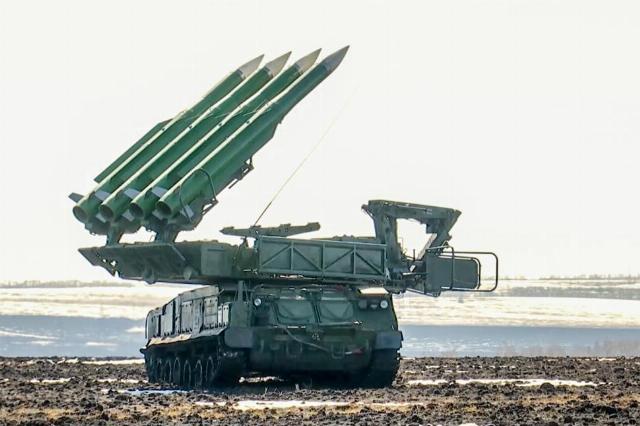
Buk-M3 air defense system
Image source: © The press service of the Ministry of Defense of the Russian Federation/ tass
One of the most serious foreign missile systems is the American Patriot air defense system, but Russian products surpass it in range, like any foreign analogues. "In terms of range, all our means exceed all available analogues of our counterparts. In terms of location facilities, the characteristics are comparable and approximately the same, and our facilities are in no way inferior in terms of noise immunity," concluded Druzin.
Gulia Levanenkova, Artur Shaikhutdinov, Georgy Sultanov
